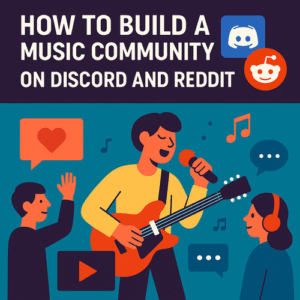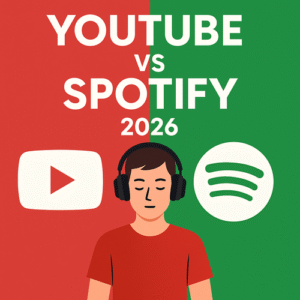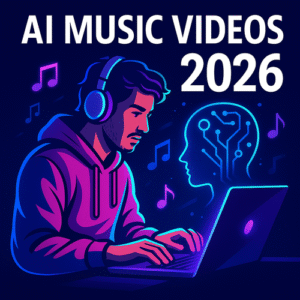In 2026, short-form videos dominate online culture. TikTok, Instagram Reels, and YouTube Shorts have become the primary way people discover new music. A single viral clip can reach millions within hours — but turning that attention into real Spotify or Apple Music streams is the real challenge.
Thousands of artists go viral every year, but only a handful convert those views into sustainable fanbases and monthly listeners. The difference lies in strategy — not luck.
This guide will show you how to transform short-form video exposure into consistent, organic music streams that grow your career long-term.
Why Short-Form Videos Drive the Modern Music Industry
People no longer discover songs on the radio — they find them while scrolling. A catchy chorus or a powerful lyric clip can instantly make a viewer search for your track.
Platforms like TikTok and Reels reward engagement, authenticity, and repeat viewing. That means a well-timed short video can outperform a paid ad campaign by a huge margin.
But virality alone isn’t enough. If your content doesn’t guide people to your full song or artist profile, the momentum stops there. That’s why conversion strategy is essential.
Step 1: Use Your Song’s Strongest Hook
Attention spans are shorter than ever. The first 3 seconds of your video determine whether someone keeps watching. That’s why your content should always feature the catchiest part of your track — the hook, drop, or emotional lyric that defines your song.
Think of your song as a movie. The short-form version is the trailer — a quick, high-impact preview that makes people want to experience the full version.
If your song doesn’t have an instantly recognizable hook, create one through a remix, vocal snippet, or lyric highlight specifically for short-form use.
Step 2: Optimize Video Length and Structure
Most viral short-form videos fall between 7 and 15 seconds. This format works perfectly with how people consume content — fast, emotional, and loopable.
Keep your structure simple:
- Start with visual intrigue (movement, emotion, or color)
- Hit the song’s hook immediately
- End with a subtle loop or replay-worthy ending
Looping increases replays — and every replay sends a positive signal to the platform’s algorithm, boosting your reach.
Step 3: Add Clear Audio Credits and Links
Don’t assume people will search for your song name — tell them directly where to find it.
Use on-screen text like:
- “Stream this full song on Spotify – [Artist Name]”
- “Search: [Song Title] by [Artist Name]”
In your caption, include a Spotify or Apple Music link (especially on Instagram or YouTube Shorts). On TikTok, make sure your sound is properly registered and linked through a verified distributor.
Step 4: Post Consistently Across Platforms
Consistency beats perfection. In 2026, the algorithm favors creators who post frequently and stay active.
Repurpose your videos for each platform:
- TikTok: Emotional or funny storytelling with your track
- Instagram Reels: Aesthetic and lifestyle visuals
- YouTube Shorts: Behind-the-scenes or narrative clips
Each audience behaves differently — but the goal is always the same: connect your video’s emotion to your music.
Step 5: Engage with Every Comment
Engagement converts curiosity into fandom. When viewers comment on your video, reply personally. Pin thoughtful comments or questions like:
“What part of the song hit you most?”
“Should I drop an acoustic version next?”
Every reply pushes your video higher in the algorithm and makes fans feel directly connected to you.
Boost Your Music with Daimoon.media
Daimoon.media is a leading music marketing agency based in Rotterdam, helping both emerging and established artists grow their presence on Spotify, YouTube, and SoundCloud. With a proven track record—over 10,000 artists served, 15 million YouTube views, and millions of playlist listeners—Daimoon.media delivers safe, organic, and fully tailored promotion campaigns for every genre.
Step 6: Encourage Fan Participation
Encourage your audience to use your song in their own videos. Challenge trends, dance moves, or emotional storytelling formats work especially well.
When fans start using your sound, the platform’s algorithm automatically promotes it further. The more user-generated videos your sound gets, the more likely Spotify’s algorithm will pick up on it too — triggering recommendations and playlist placements.
Step 7: Use Data to Track Conversions
Monitor which videos actually lead to stream spikes. Use tools like:
- Spotify for Artists (for traffic sources and stream increases)
- TikTok Analytics (for video reach and audience demographics)
- Linktree or Toneden (for click tracking between platforms)
If one particular format consistently drives traffic to your streaming pages, double down on it.
Step 8: Leverage Spotify Canvas and Visual Branding
When new fans land on your Spotify profile, the visual experience should match what they saw in your short-form videos.
Add a Spotify Canvas — a looping visual from your viral clip — to reinforce recognition. Make sure your cover art, banner, and profile bio reflect the same aesthetic or message from your short-form content.
This consistency builds trust and makes your brand instantly recognizable across platforms.
Step 9: Collaborate with Other Creators
Partnering with influencers or other artists is one of the fastest ways to boost conversion. A short video featuring your track on a larger creator’s profile can generate thousands of new listeners overnight.
When collaborating, focus on authenticity. Choose creators whose style matches your genre and audience. Forced promotions feel inauthentic — organic collaborations build real momentum.
Step 10: Combine Storytelling with Sound
The most viral short-form videos don’t just show — they tell a story. Pair your music with visuals that evoke emotion or curiosity.
Examples:
- A short film-style clip that leads into your chorus
- Real moments of you performing or recording
- Emotional reactions to the lyrics
People don’t just stream songs they like — they stream songs that make them feel something.
The Algorithm Connection: From Short-Form to Spotify
Here’s the magic link: when fans interact with your short videos, they often click through to your profile or streaming links. The Spotify algorithm then detects that external engagement — and treats it as organic discovery.
That means every viral short can spark a chain reaction:
- Social engagement brings new listeners
- Spotify recognizes genuine interest
- Algorithm boosts your track in Discover Weekly and Radio
Short-form videos aren’t just marketing — they’re algorithm fuel.
FAQ: Turning Short Videos into Streams
1. Do I need to go viral to gain streams?
No. Even small, consistent engagement can steadily build a fanbase if you link your music clearly and post often.
2. Should I use paid ads on TikTok or Reels?
You can, but organic trends usually perform better. Use ads to boost content that’s already doing well.
3. How many videos should I post per week?
Aim for 3–5 short videos per week, even if they reuse the same audio. Consistency matters more than novelty.
4. What’s the best platform to focus on?
TikTok remains #1 for music discovery, but cross-posting to Reels and Shorts multiplies your reach.
5. Does Spotify reward off-platform engagement?
Yes. External traffic from TikTok or YouTube helps Spotify recognize that your song has real buzz.




